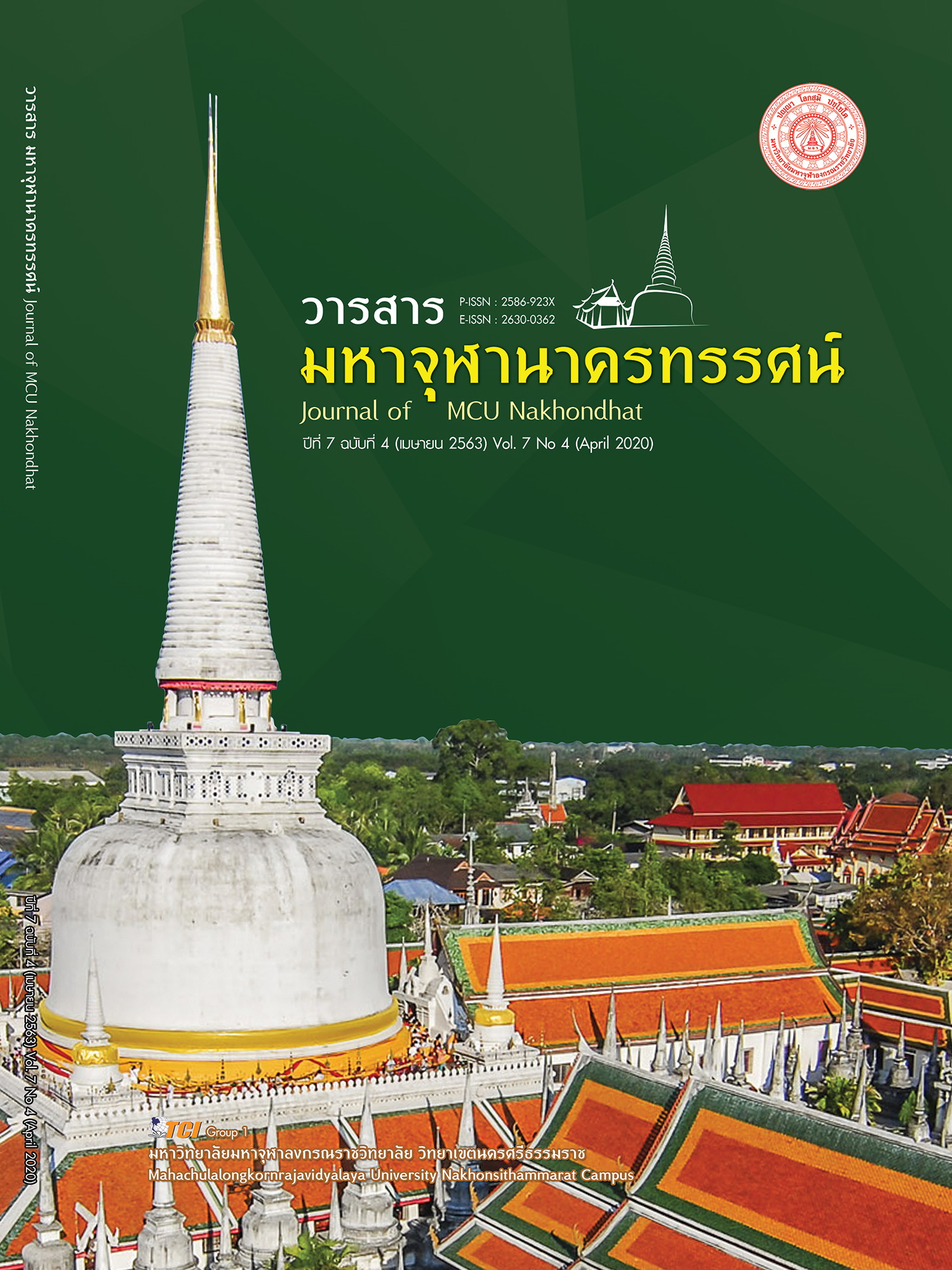A STUDY OF REINCARNATION PROCESS IN THERAVADA AND VAJRAYANA BUDDHISM
Main Article Content
Abstract
This study had 3 main purposes; 1) To study the reincarnation processes in Theravada Buddhism. 2) To study the reincarnation processes in Vajrayana Buddhism, and 3) To make the comparison between Theravada Buddhism and Vajrayana Buddhism in terms of reincarnation processes. The documentary research methodology was applied both studying primary and secondary documents. The paired comparison was used and its results were presented according to the research objectives.
The findings revealed as follows; There were 2 groups of reincarnation processes; the first group was the spirits with desires such as Never – Returner, Once-Returner, Stream-Enterer, human-being, animal, departed being, and Asura demons. The second group was the Buddhist saints who never reborn. Theravada Buddhism focused on spirit. There were 31 states of reincarnation places that divided into 2 groups. The first group was woeful state, animal kingdoms, and ghost-sphere. The second group was Human Realm, Realm of the Four Great Kings – Realm of the Thirty-three Gods as well as Form Planes according to the 3 rebirth cycle principles.
In Vajrayana Buddhism, the reincarnation could be referred to changing the state of existence by Karma (or actions). After the death, it took 7 days to become Sambhavesi (or a spirit seeking) waiting for the rebirth. It depended on the signs that determined where the spirit would go (Sugatibhumi or Duggatibhumi). In addition, the Vajrayana had the ritual ceremony in order to determinate the Bhumi after death by leaning on Bodhisattva power.
There were 3 important considering issues of reincarnation; 1) Theravada Buddhism believed that humans could not select their death time, place,and even who they would be. According to Vajrayana Buddhism, humans could live longer if the life prolonging ceremony was done. 2) The space between death and rebirth,in Vajrayana Buddhism, it took 7 days to rebirth. 3) The likeliness between Theravada and Vajrayana Buddhism was the rebirth processes depending on humans’ Karma. However, there had some differences between Theravada and Vajrayana Buddhism. According to Theravada Buddhism, the action or Karma could not be changed. In Vajrayana Buddhism, on the contrary, there was the ritual ceremony to help the spirit go to Sugatibhumi.
Article Details
References
ประพันธ์ ศุภษร. (2550). ศึกษาวิเคราะห์พัฒนาการแห่งการตอบปัญหาเรื่องกรรมกับอนัตตาในพระพุทธศาสนาเถรวาท. ใน ดุษฎีนิพนธ์พุทธศาสตรดุษฎีบัณฑิต สาขาวิชาพระพุทธศาสนา. มหาวิทยาลัยมหาจุฬาลงกรณราชวิทยาลัย.
พร รัตนสุวรรณ. (2539). ตายแล้วเกิด. กรุงเทพมหานคร: สำนักค้นคว้าทางวิญญาณ.
พระพรหมคุณาภรณ์ (ป.อ.ปยุตฺโต). (2551). พจนานุกรมพุทธศาสน์ ฉบับประมวลศัพท์ (ชำระ - เพิ่มเติม ช่วงที่ 1). กรุงเทพมหานคร: โรงพิมพ์มหาจุฬาลงกรณราชวิทยาลัย.
มหาจุฬาลงกรณราชวิทยาลัย. (2535). พระไตรปิฎกภาษาไทยฉบับมหาจุฬาลงกรณราชวิทยาลัย. กรุงเทพมหานคร: โรงพิมพ์มหาจุฬาลงกรณราชวิทยาลัย.
มหาจุฬาลงกรณราชวิทยาลัย. (2539). พระไตรปิฎกฉบับภาษาบาลี ฉบับมหาจุฬาลงกรณราชวิทยาลัย. กรุงเทพมหานคร: โรงพิมพ์มหาจุฬาลงกรณราชวิทยาลัย.
วัชระ งามจิตรเจริญ. (2551). แนวความคิดเรื่องอันตรภพในพุทธศาสนาเถรวาท จาก ไตรภูมิพระร่วงถึงภิกษุสันดานกา: ความเชื่อ ความงาม ความจริง. ใน โครงการ ส่งเสริมและเผยแพร่งานวิจัยเนื่องในวาระหนึ่งทศวรรษพุทธศาสนศึกษา. มหาวิทยาลัยธรรมศาสตร์.
ส.ศิวรักษ์. (2531). เตรียมตัวตายอย่างมีสติ. กรุงเทพมหานคร: คณะกรรมการศาสนาเพื่อการพัฒนา.
สยาม ราชวัตร. (2553). วิธีอ้างเหตุผลเพื่อยืนยันความมีอยู่ของโลกหน้าในพระพุทธศาสนา เถรวาท. ใน ดุษฎีนิพนธ์พุทธศาสตรดุษฎีบัณฑิต สาขาวิชาพระพุทธศาสนา. มหาวิทยาลัยมหาจุฬาลงกรณราชวิทยาลัย.


